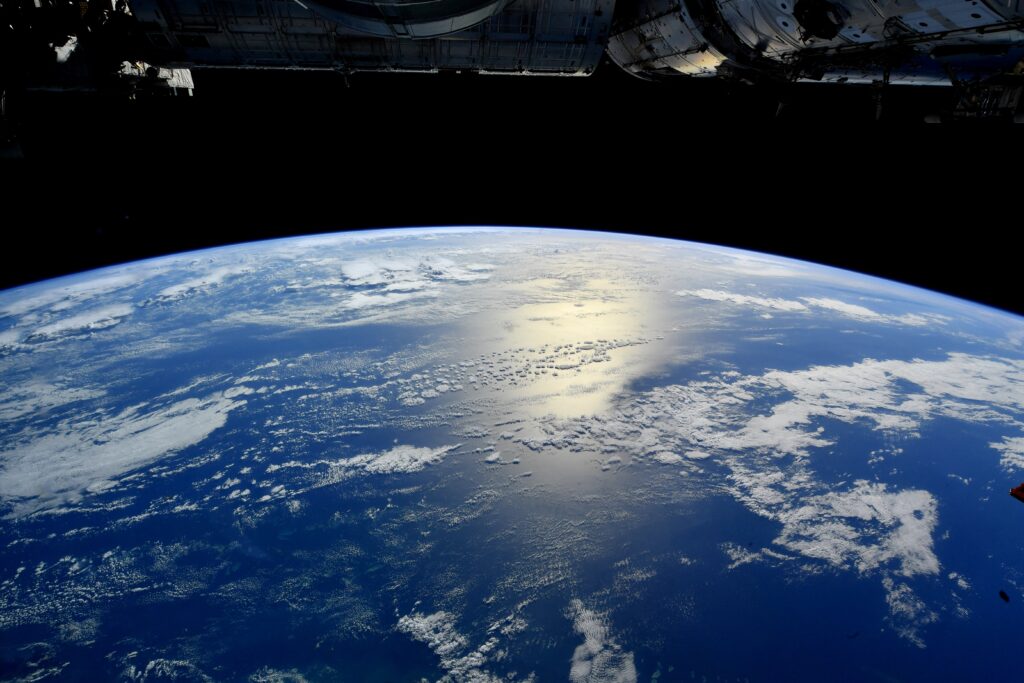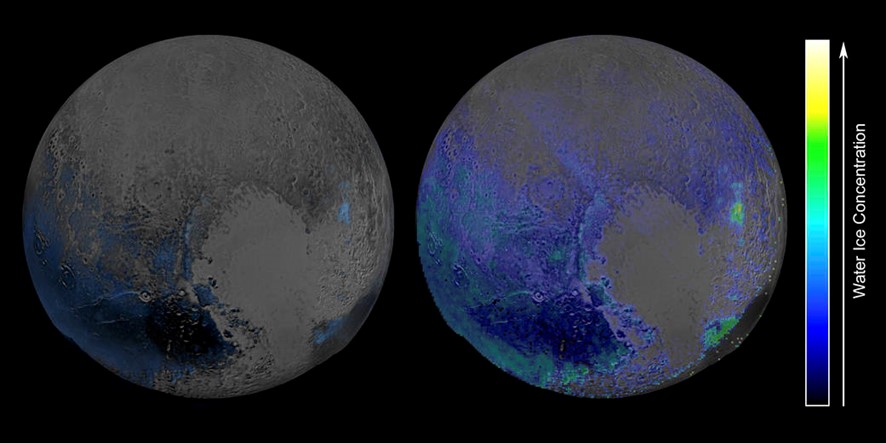
Earth’s oceans, as seen from space. Image credit: European Space Agency
By Mariana Meneses
A new study, published in the journal Geophysical Research Letters by Ki-Weon Seo and co-authors, reveals that excessive draining of groundwater for irrigation has resulted in significant sea-level rise and a shift in Earth’s rotational axis.
The Earth’s axis of rotation naturally experiences slight variations due to factors such as ocean currents, melting glaciers, and changes in mass distribution.
However, the study emphasizes that human activities, including groundwater extraction, have played a substantial role in altering the planet’s rotational pole. The research highlights the enormous volume of water pumped out of the ground, which has had profound consequences for the polar drift of the Earth. Besides underscoring the significant influence humans have on Earth’s rotational dynamics, these findings emphasize the need to manage groundwater resources more sustainably.
Understanding water’s origin is key for sustainable groundwater management.
Water is fundamental to human existence and the planet we inhabit. Water comprises close to 60% of the weight of a human adult, underscoring the profound bond we share with this essential life-giving compound of two hydrogen atoms and one oxygen atom.
Fortunately, our Earth, often hailed as the “blue planet,” has an abundance of water.
There is an indissoluble connection between water’s presence and the origin of life, which has fueled a thirst to identify traces of water among the distant planets, asteroids, and other celestial bodies explored by our telescopes and probes. Advances in understanding where water comes from and its remarkable properties are helping us to uncover water management techniques and the secrets of life itself.
We know that much of Earth’s water is older than the Sun. But, as the BBC explains, water is “really, really weird.” Water, in its molecular form, has existed for billions of years, permeating various physical substances such as rocks, air, animals, and plants in a continuing cycle. Water’s remarkable journey has taken it to the bodies of dinosaurs, bacteria, vast oceans, clouds, and massive icebergs, among countless other places. Interestingly, all the water found on our planet came from extraterrestrial sources.
Water may have arrived on Earth on asteroids and comets that originated in the outer regions of our solar system as remnants of immense clouds of dust and rocks that failed to coalesce into planets.

As explained in the PBS production Where Did Water Come From?, Earth formed 4.5 billion years ago and, after a collision with a Mars-sized planet, ejected a mass of debris that coalesced into the Moon during the first of four of Earth’s geologic periods known as the Hadean Eon.
Evidence, such as the abundance of water on Europa, one of Jupiter’s moons, suggests that water would be more prevalent in regions farther from the Sun. However, despite its proximity to the Sun, a combination of conditions allowed for liquid water to appear on Earth’s surface.
Although Earth’s water has undergone changes over billions of years, its exact source remains a subject of ongoing debate.
Research suggest that Earth’s water is the result of a mixture of water accumulated during the Hadean Eon and water delivered by meteorites, making the journey to its current state a complex and remarkable process.
One of the most intriguing aspects of water is its unconventional chemical behavior. Given its molecular composition, water should exist as a gas on our planet, and as a liquid it should contract when frozen, but instead it expands. Additionally, water molecules appear to possess an ability to defy gravity, moving either without force or against gravity’s force in a process known as capillary action. These are some of the characteristics that make water so special and allow for the survival and evolution of life.
Water’s prevalence extends beyond our planet. It permeates our solar system, being found on celestial bodies such as the Moon, Mars, Pluto, and many others. Its ubiquitous presence raises the possibility of life in extraterrestrial environments.

The enigmatic behavior and properties of water are essential to human existence, yet a full understanding of water’s characteristics continues to elude scientists.
As researchers delve deeper into the mysteries of water, they strive to unravel the intricacies of its strange behavior, recognizing its fundamental importance in shaping the world as we know it.
According to the Scientific American, in May 2023 the James Webb Space Telescope (JWST) detected indications of water vapor on GJ 486 b, a rocky exoplanet that orbits the star GJ 486, also known as Wolf 4371, a red dwarf star located about 26.3 light-years away in the constellation Virgo. These findings were reported in a preprint study by Sarah Moran and co-authors, and could be a significant breakthrough in the search for habitable worlds, although there is a possibility that the water vapor may originate from spots of magnetic activity on the planet’s host star.
To unravel this mystery and determine the true source of the water vapor, further observations using different instruments are required. It is worth noting that GJ 486 b is not considered habitable or Earth-like due to its extreme temperature and close proximity to its host star. However, these findings could pave the way for further exploration of other exoplanets and advance our understanding of the potential habitability of these distant worlds.
Studying the origins of Earth’s water underscores the complexity of the journey taken by these curious molecules made by the combination of two hydrogen atoms and one oxygen atom. It also highlights the imperative for sustainable groundwater management to ensure the continued availability of this precious life-sustaining resource.
Water, an enigmatic and essential element, not only shapes life on our planet but also offers tantalizing clues to the mysteries of life beyond our world.
As we delve deeper into the secrets of water, from its strange behavior to its potential presence on distant exoplanets, we continue to unlock the fundamental role it plays in shaping our understanding of the universe and our place within it.



